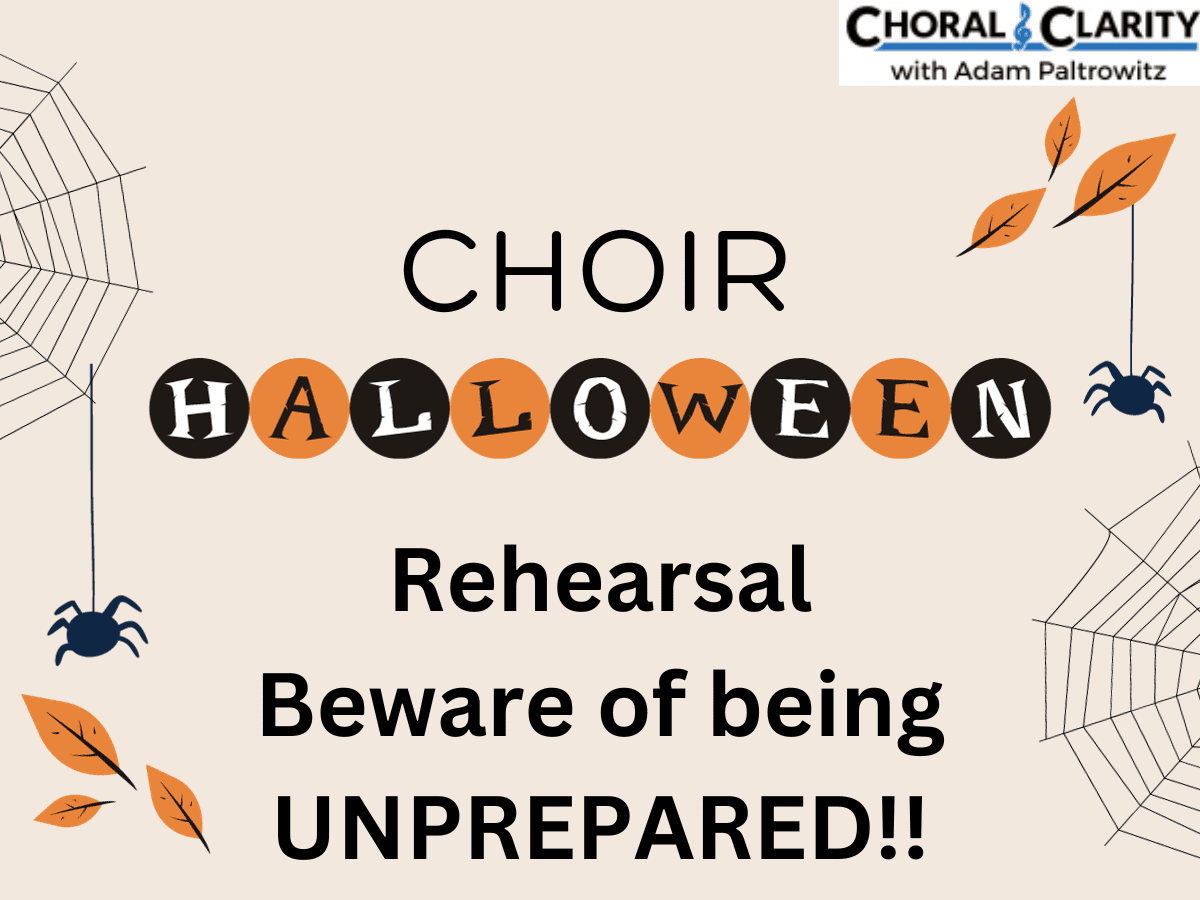Let’s immediately dispel the belief that students just don’t care; it is quite rare to find any student who really does not care at all. The more likely situation to address is how to engage the students who appear to not care.
It is certainly true that some students might appear not to care. Students might not connect to our subject, to their surroundings, to our approach, or even to us. More importantly, they might be struggling with inner turmoil and external issues that affect every aspect of their being.
While they may have personal issues that we cannot change, there are lots of things we can do within our choral universe to positively impact their experience; not only is it our obligation to reach these students within our program, our efforts may significantly impact their lives outside of choir as well.
As teachers, we need to figure out why these students appear to not care about how they are participating within in our class. Why aren’t we reaching them? Why is our teaching approach not connecting with these specific students?
What a student who doesn’t care looks like
Most of us view a student who doesn’t care as one who exhibits at least one of the following traits: a bad external attitude, bad rehearsal habits, sheer laziness. They may come late to class every day, or even cut class. They may leave for a daily 10 minute bathroom break in the middle of class. They may participate poorly by not making markings in their music, not sitting up, or not opening their mouth when they sing.
While these negative attributes can really frustrate us, we must understand that we are teaching real people, not robots.
How we can change these behaviors
We cannot change student behavior. Students will demonstrate behaviors and attitudes that they feel comfortable showing. The truth is that they may already care deeply, and are just not comfortable showing it, nor are they comfortable conforming to the structure we have set-up.
As choir directors, we may have an external product we are focused on producing, but as educators, we have students we need to be teaching. All students in front of us need to be reached.
Every students joins us from a unique entry point. Without understanding where they are coming from, we can’t expect every student to eagerly be ready to join us.
Some students might not deeply care about our subject. They might not care about our course requirements, our assessments, or our management system; our goal shouldn’t be to change them or to get them to conform. Our goal should be to first reach them, and then to inspire them.
Here are 7 ways to engage the students who appear to be disengaged:
1. Connect with them personally
While we should be making an effort to connect with all students, it is most important to reach the students who don’t seem to care. We should gain a personal relationship in order to see the student in a different light and for them to see us as human. By taking a moment before or after class, or even setting aside a time to chat, we are making a small investment in building that long-term connection.
2. Make all students self-aware of their behavioral and rehearsal choices
My previous blog discusses the need to instill self-awareness in all students. It is important to create a rubric where all students learn to be self-aware of how they are meeting the class expectations. Sometimes students who appear not to care are simply unaware of what they specifically need to do in order to be on task and successful. When they realize that there are tangible choices they make, they may either choose to modify their behavior or they will at least learn to recognize and/or accept their choices give off the appearance of not caring. Meeting with these student to discuss their rubric can be helpful in coming to an understanding. This meeting can also lead us to appreciate the student for who they are; we may also try to inspire them to want to improve without making they feel bad about their choices.
3. Meet them where they are
Accept what they are willing to give at this entry point and find the good. If they’ve never sat up before in class, understand it will not be a priority to them to automatically do it. Be happy they have chosen to be in our program, and think long-term about what they can accomplish. This brings us to #4……
4. Gradually take them from the known to the unknown
Allow students to do what they do. As they become more comfortable, we can gradually encourage them (or have other students encourage them) to meet higher levels. Encouragement to make good choices is useful, but attacking poor choices will further the disconnect. The unknown for many of these students feels like “conforming” and “giving in”. We must accept their choices and trust that their growing sense of comfort will expand their known more and more into their unknown.
5. Challenge them
If we challenge them to do something that we know they can succeed in, they may rise to the occasion. Challenge them to find a recording of a song for the class, or give them a specific assignment that is framed as a personal challenge. Building their confidence while personalizing an opportunity to learn is a useful way to engage.
6. Allow them to succeed on their own terms
Students do not need to be compared to one another. Some will succeed in ways that aren’t measured academically. We might spark them with something not necessarily curriculum-related or rehearsal-related. Maybe a student will fall in love with a specific song they are learning in our class, and as a result went home and listened to multiple recordings on Youtube. Maybe they are motivated to paint a mural on the choir room wall. I once had a student who by most academic measures was below average and ended up falling in love with Bach; by the time he entered college, he was more knowledgeable about Bach’s life and works than I could ever be. This student never did earn a high grade in choir, nor was he a student that I could count on for traditional leadership. With that said, he clearly cared about learning and contributed greatly in his own way.
7. Catch them when they are engaged
Even a broken clock is right twice a day. We should be looking for times when these students are engaged, and acknowledge it. If they rarely sit up when they sing and suddenly choose to, privately compliment them. If they go out of their way to contribute to the ensemble in any way, recognize them. It is important to acknowledge positive efforts without pointing out their negative attributes at the same time. For example, if a student decides to sit up and hold up their music during a specific song (maybe this is a song that they really connect to), we can certainly acknowledge their effort, on their way out the door; we must not follow that up by saying, “now imagine if you did that all the time…..”.







Leave A Comment